[Content Warning: discusses mental illness and rape; contains spoilers for American McGee’s Alice and Alice: Madness Returns]
Alice’s Adventures in Wonderland is more than an (150 year) old book. It’s a phenomenon. Initially conceived as an entertaining story for the real-world Alice Liddel and her sisters, Wonderland and its sequel, Through the Looking-Glass, serve as landmark examples of the literary nonsense genre. To this day, author Lewis Carroll’s command of wordplay and symbolism is continuously debated, decrypted, and deconstructed by leading scholars, critics, and, perhaps most importantly, children.
Wonderland has been capturing curiosity since the story was first orally delivered to Alice, Edith, and Lorine Liddel on a rowboat in 1862. Given its popularity with audiences of all ages, Alice has naturally become one of the most adapted works of fiction in worldwide media today.
Some reimaginings have been better than others (good cinematography is no excuse for a lukewarm script, Disney), but few have taken Alice down as darkly as American McGee.
McGee’s Wonderland, a fantastically grim renovation of Carroll’s work, quickly became a cult classic near the end of the year 2000. It boasts an unapologetically gory aesthetic, fully realized with graphics well beyond those of competing games at the time. Over a decade later, McGee returned to the franchise with a sequel, Madness Returns, and is currently working on short film tie-ins, subtitled Otherlands, through Kickstarter.
The figurehead of McGee’s sprawling vision is Alice herself, a blood-stained punk edit of the original Wonderlander that you’ve probably seen carrying around a giant kitchen knife on DeviantArt. For better or worse, Alice has become an icon within many gaming circles. There’s a moral here, as I’m sure the Duchess would agree, but we’re going to have to be clever enough to find it.
Down the Rabbit Hole
The central plot of McGee’s twisted tale revolves around Alice’s ongoing struggle with mental illness, having suffered a psychotic break 10 years prior to the first game after surviving a house fire that claimed the lives of her parents and sister. Coping with severe post-traumatic stress and survivor’s guilt, Alice’s madness takes on the form of Wonderland, a now-rotting dream world that she had visited twice before in the Carroll canon.
Mental illness has always been popularly associated with Alice as a figure, but hasn’t always been treated with the respect and consideration such a hefty subject demands. Serious afflictions, such as clinical depression or bipolar disorder, are portrayed as tragic, but aesthetically beautiful conditions easily cured by the love of a generic classically handsome optimist. Barf.
Mental illness is not beautiful and McGee does not treat it as such. For Alice, Wonderland becomes an escape. The fantastic landscapes and areas found in both games are ultimately being corrupted by her own faltering grip on reality. The trauma she’s endured is not a quirk of her past. It’s horrific.
Had her mental illness been romanticized, Alice’s experiences would have been watered down to serve a toxic narrative, perpetuating stereotypes that invalidate the needs of actual people living with actual disorders.
And it’s not like Alice needs saving anyway.
Of Madness and Muchness
A major theme of both games is control. After her psychotic break, Alice is at the mercy of 19th century Victorian medical community. The poor quality of her care is made particularly evident in the sequel, in which numerous characters attempt to take advantage of her unstable condition. The most prominent among them is Dr. Bumby, a manipulative psychiatrist who uses hypnosis to control and commodify his patients.
Much of Alice’s narrative revolves around her regaining agency over her own body and mind. She doesn’t require or even ask for a savior, instead advocating for her own independence and treatment.
She doesn’t stop there. At the crux of Madness Returns is a recurring idea: if Alice saves herself, she’ll save Wonderland. Midway through the game, the Caterpillar corrects her. If Alice saves Wonderland, she’ll find a way to save herself.
Social movements, like feminism, are built through interpersonal connections. Women should support other women. Men should support women. Women should support men. Everyone supports everyone else, regardless of gender identity. Alice is always willing to help those around her, establishing a network from which to draw mutual strength.
This is most importantly displayed in the relationship between Alice and Nan Sharpe, former nanny turned sex worker. After Alice stands up to one of Nan’s violent patrons, the two women encourage one another to help themselves, breaking free from the patriarchal systems binding them.
While Alice always advocates initiative and chastises complacency (“Everyone around here has an excuse for doing nothing”), she also addresses her own priviledges that make such a mindset possible. Coming from a wealthy, well-educated family and recently enjoying a rare period of lucidity, Alice is in a position to help the other orphans, whose young naiveté is preyed upon by Dr. Bumby.
The guilt she feels for not acting can easily be applied to the real world. For example: while white cis women do still experience sexism, they hold more priviledge than non-white and/or transgender women, who also encounter different forms of discrimination.
Alice was selfish not to acknowledge her own priviledge in this very specific, fictional scenario. While she still had problems of her own to deal with, she could have been a better ally to those more socially disadvantaged.
“Are you a pawn or a queen?”
When people try to think of strong, active female characters, they often bring up Sucker Punch, a 2011 action-adventure movie that performed poorly at the box office and among critics. It stars a handful of racially diverse women fighting back against an oppressive system that tries to commodify their bodies and control their minds. Sounds like a feminist flick, right?
Wrong. Sucker Punch is an excellent example of how “strong” female characters are often just dressed in lingerie and tossed into battle. Because as long as these women are shooting people, objectifying them isn’t sexist. At least, that’s what you’re supposed to think.
Alice thankfully doesn’t suffer Sucker Punch‘s fate. Make no mistake, she’s still an “Action Girl.” She runs around stabbing people, for God’s sake, but she’s never over-sexualized or designed to cater to the male gaze. Even when she grows and shrinks, a clever mechanic lifted straight from the book, her clothes grow and shrink with her. The developers actively avoided a plausible situation in which she might appear undressed. Amazing.
Another important point to bring up is that Alice is never a man’s subordinate. Her male guide, the Cheshire Cat, isn’t a mentor. He doesn’t teach her to fight and doesn’t dictate her actions. He just supports her. As though they are equals. Radical.
The sequel actually calls out sexism openly in the finale. Alice has fought through the mental manipulation she suffered at the hands of Dr. Bumby and confronts her former psychiatrist for his crimes. She’s pissed. And emotional. And in control. Her passion is empowering, not degrading.
Her passion is empowering, not degrading.
And Bumby laughs it off. He tells her that no one in England would take her word, the ravings a mad girl, against that of a distinguished gentleman. And she knows that he’s right and that the Victorian judicial system will probably fail her and that she’ll never get justice for her family.
So she gets revenge. She fearlessly takes back her sister’s key and pushed Bumby in front of an oncoming train.
Okay, I’m not saying we need vigilantes going around killing people, but Madness Returns did something a lot of video games aren’t brave enough to do: explicitly acknowledge that sexism is actually a thing.
Back to Yesterday
Despite adapting arguably the most feminist Alice to date, American McGee is not a perfect man and these are not perfect games. Everyone makes mistakes, but it’s important to acknowledge and learn from them before moving on. Madness Returns stumbles three times in particular.
Everyone makes mistakes, but it’s important to acknowledge and learn from them before moving on.
Strike one: Midway through Alice’s (otherwise amazing) monologue against Bumby, she vows that she’ll see him imprisoned and “some half-wit bruiser will make [him] his sweetheart.”
After spending the whole game fighting against a powerful man who coerces children into a sex-trafficking ring, Alice holds the threat of prison rape over his head. Obviously, this is not okay.
Rape culture is already so pervasive in our society. Alice should know better than perpetuate it.
Strike two: There’s a level called “Oriental Grove” that takes imagery from both Chinese and Japanese cultures, blending them to create a visually pleasing level populated by “Samarai” insects.
I get it. It looks cool and American McGee has lived in China for like, ever, but he is not of these cultures and they are not his to appropriate into this fantasy world.
Still, I’m hesitant to call this one out. The Interchangeable Asian Cultures trope is typically racist, but the “Oriental Grove” is definitely meant to celebrate Chinese culture. I mean, Ken Wong is the art director, so he obviously had a say in it. They really messed up by throwing in Japanese elements.
And the kimono-inspired dress was in pretty poor taste too.
Overall, the level had no logical place in the narrative, even using nonsensical reasoning. Alice isn’t of Chinese, or even Asian descent. It’s made very clear that this Wonderland exists inside her head. What’s the “Oriental Grove” doing there?
Strike Three: The exposed shoulder on the straitjacket dress was just ridiculous.
So is Alice out? Hardly. Every piece of media houses problematic elements. By identifying them, we encourage creators to strive for more nuanced writing and diverse representation.
Behind the Looking-Glass
With Otherlands still on the horizon, we can look forward to more of McGee’s Alice, hopefully continuing to champion positive female representation in video games and Wonderland reimaginings everywhere. This time, we’ll only be watching Alice rock the blue dress/red knife look, but who knows what the future holds? We could be bringing our controllers back into Wonderland sooner than we think.
Have something to add? Leave a comment below. Just remember the Hatter’s advice: if you don’t think, then you shouldn’t talk.
Ladies in Gaming will be back Friday, September 18th. Until then, watch out for white rabbits.
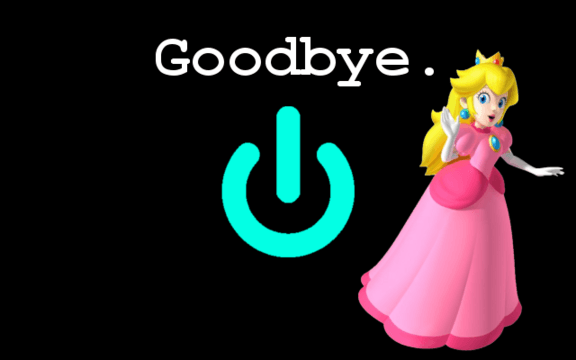


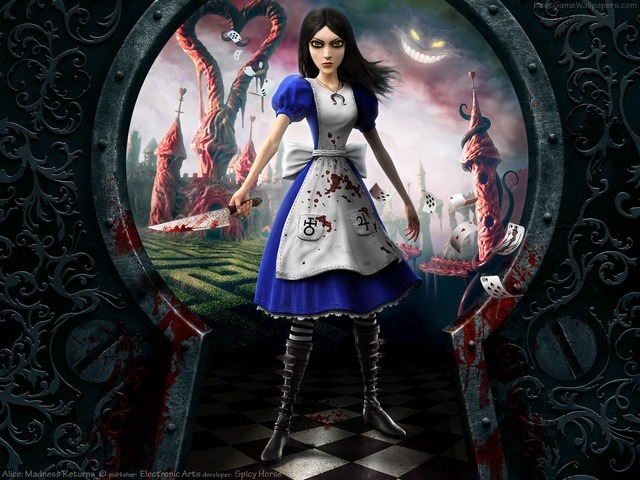

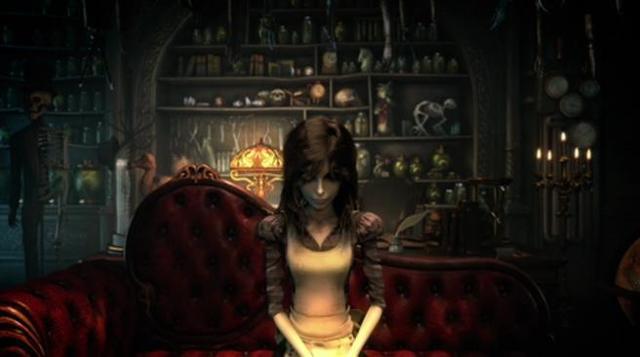

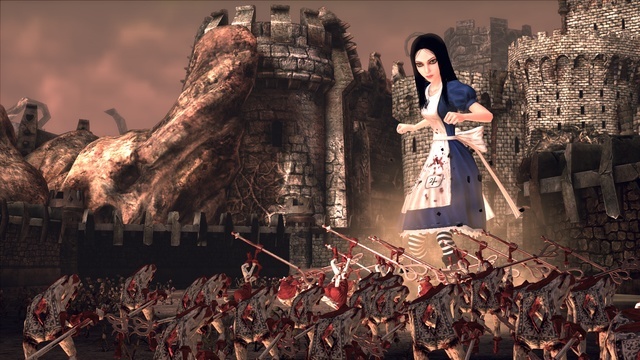

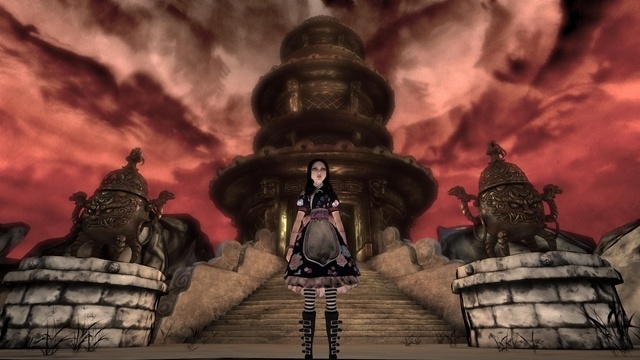
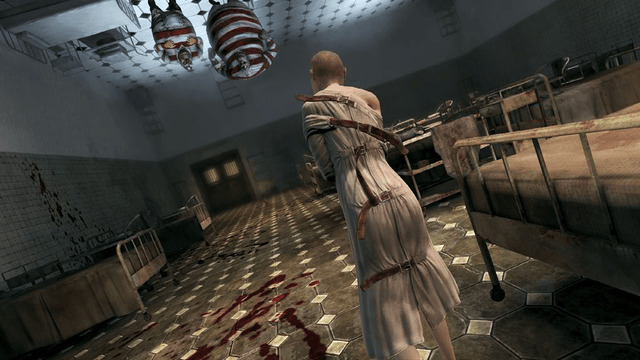





Published: Sep 3, 2015 08:27 pm